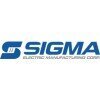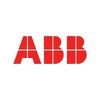Filter interviews by
Lakshmi Machine Works Junior Engineer Interview Questions and Answers
5 Interview questions
Instrument handling refers to the proper use, care, and maintenance of tools and equipment used in a particular field.
Properly clean and sterilize instruments before and after use
Handle instruments with care to prevent damage or contamination
Store instruments in a safe and organized manner
Regularly inspect instruments for wear and tear
Follow manufacturer's instructions for use and maintenance
Examples: surgical ins...
FMEA is a risk assessment tool used to identify and mitigate potential failures. 5S is a workplace organization method. CP and CPS are statistical process control measures.
FMEA stands for Failure Mode and Effects Analysis. It is a systematic approach to identifying and mitigating potential failures in a process or product.
5S is a workplace organization method that involves sorting, simplifying, sweeping, standardi...
CTQ stands for Critical to Quality and CTC stands for Critical to Customer.
CTQ is a measurable characteristic of a product or process that is important to the customer.
CTC is a measurable characteristic of a product or process that directly impacts customer satisfaction.
Identifying CTQs and CTCs helps in improving the quality of the product or process.
Examples of CTQs and CTCs include product reliability, on-time ...
7 QC tools are used for quality control in manufacturing. They are simple and effective tools to identify and solve problems.
Check sheets - used to collect data and analyze it
Pareto charts - used to identify the most frequent problems
Histograms - used to show the distribution of data
Cause-and-effect diagrams - used to identify the root cause of a problem
Flowcharts - used to show the steps in a process
Control chart...
Gauges are instruments used to measure various physical quantities. There are different types of gauges for different purposes.
Pressure gauges measure pressure of fluids or gases
Temperature gauges measure temperature of substances
Thickness gauges measure thickness of materials
Wire gauges measure diameter of wires
Bore gauges measure diameter of holes
Thread gauges measure pitch and diameter of screws
Fuel gauges meas...
Lakshmi Machine Works Junior Engineer Interview Experiences
1 interview found
I applied via Company Website and was interviewed in Feb 2023. There were 2 interview rounds.

(6 Questions)
- Q1. 7 types of qc tools
- Ans.
7 QC tools are used for quality control in manufacturing. They are simple and effective tools to identify and solve problems.
Check sheets - used to collect data and analyze it
Pareto charts - used to identify the most frequent problems
Histograms - used to show the distribution of data
Cause-and-effect diagrams - used to identify the root cause of a problem
Flowcharts - used to show the steps in a process
Control charts - u...
- Q2. What is FMEA,what are the 5s,cp vs cps different
- Ans.
FMEA is a risk assessment tool used to identify and mitigate potential failures. 5S is a workplace organization method. CP and CPS are statistical process control measures.
FMEA stands for Failure Mode and Effects Analysis. It is a systematic approach to identifying and mitigating potential failures in a process or product.
5S is a workplace organization method that involves sorting, simplifying, sweeping, standardizing,...
- Q3. What is the ctq and ctc
- Ans.
CTQ stands for Critical to Quality and CTC stands for Critical to Customer.
CTQ is a measurable characteristic of a product or process that is important to the customer.
CTC is a measurable characteristic of a product or process that directly impacts customer satisfaction.
Identifying CTQs and CTCs helps in improving the quality of the product or process.
Examples of CTQs and CTCs include product reliability, on-time deliv...
- Q4. What are the different gauges
- Ans.
Gauges are instruments used to measure various physical quantities. There are different types of gauges for different purposes.
Pressure gauges measure pressure of fluids or gases
Temperature gauges measure temperature of substances
Thickness gauges measure thickness of materials
Wire gauges measure diameter of wires
Bore gauges measure diameter of holes
Thread gauges measure pitch and diameter of screws
Fuel gauges measure f...
- Q5. What are the instrument handling
- Ans.
Instrument handling refers to the proper use, care, and maintenance of tools and equipment used in a particular field.
Properly clean and sterilize instruments before and after use
Handle instruments with care to prevent damage or contamination
Store instruments in a safe and organized manner
Regularly inspect instruments for wear and tear
Follow manufacturer's instructions for use and maintenance
Examples: surgical instrume...
- Q6. Do you know the GD&T symbols
Interview Preparation Tips
- Quality Control
Top trending discussions




Interview questions from similar companies

I applied via Naukri.com and was interviewed before May 2020. There was 1 interview round.
Interview Questionnaire
1 Question
- Q1. Write the equation for dynamics and wave spectra equations. I do not remember questions as it is 3 years back.
Interview Preparation Tips

Senior Engineer Interview Questions & Answers
Sigma Electric Manufacturing Corporationposted on 10 May 2018
I applied via Company Website and was interviewed in Jan 2018. There were 2 interview rounds.
Interview Preparation Tips
Experience: technical round
no. of questions 30
Round: Test
Experience: Questions related to NPD
no. of questions 10
Round: Test
Experience: VP Round
all questions reated to job 10
Round: Test
Experience: HR round ..
General Tips: Know the JD before interview
Skills: Communication, Body Language, Decision Making Skills
Duration: 1-4 weeks

Senior Engineer Interview Questions & Answers
Isgec Heavy Engineeringposted on 20 Nov 2021
I applied via Naukri.com and was interviewed in May 2021. There was 1 interview round.
Interview Questionnaire
1 Question
- Q1. They just asked basics que. related to job profile.. seeking confidence..
Interview Preparation Tips

I applied via Referral and was interviewed before Apr 2021. There was 1 interview round.
(1 Question)
- Q1. Maintenance phylosophy
Interview Preparation Tips
- Boe
- Energy manager

Senior Engineer Interview Questions & Answers
Isgec Heavy Engineeringposted on 11 Oct 2020
I applied via Recruitment Consulltant and was interviewed in Oct 2020. There were 5 interview rounds.
Interview Questionnaire
4 Questions
- Q1. Basic of fabrication, materials welding processes, distortion control methods, lifting techniques
- Q2. Telephonic conversation regarding basics of welding and material properties
- Q3. Interview with a panel of 4 judges
- Q4. Salary negotiation notice period etc
Interview Preparation Tips

Senior Engineer Interview Questions & Answers
Isgec Heavy Engineeringposted on 19 Sep 2023
I applied via Referral

(1 Question)
- Q1. Work Experience Questions
(1 Question)
- Q1. Behavioral Questions

I applied via Referral and was interviewed in Nov 2023. There were 3 interview rounds.

(1 Question)
- Q1. What is your highest qualification
- Ans. Bachelor's in civil engineering
(1 Question)
- Q1. What is your role and responsibilities in the project quality?

Senior Engineer Interview Questions & Answers
Isgec Heavy Engineeringposted on 28 Mar 2024
I applied via Company Website and was interviewed before Mar 2023. There was 1 interview round.
(3 Questions)
- Q1. What is the process of erection of duct
- Ans.
The process of erection of duct involves planning, fabrication, transportation, installation, and testing.
Planning involves determining the layout, size, and material of the ducts.
Fabrication includes cutting, bending, and assembling the ducts according to the design.
Transportation is the movement of fabricated ducts to the installation site.
Installation involves positioning and connecting the ducts to the HVAC system.
...
- Q2. What is the code followed for the fabrication of steel structure materials
- Ans.
The code followed for the fabrication of steel structure materials is typically based on industry standards and regulations.
The fabrication of steel structures is typically governed by codes such as the American Institute of Steel Construction (AISC) Code of Standard Practice.
Other codes that may be followed include the American Welding Society (AWS) D1.1 Structural Welding Code - Steel.
Fabrication processes must also ...
- Q3. Erection sequence of steel structure
- Ans.
The erection sequence of a steel structure involves planning and executing the assembly of components in a specific order to ensure safety and stability.
Start by assembling the foundation and anchor bolts.
Next, erect the columns and connect them to the foundation.
Then, install the beams and trusses to form the framework.
After that, add the bracing and diagonal members for stability.
Finally, complete the structure by ad...

Senior Engineer Interview Questions & Answers
Isgec Heavy Engineeringposted on 16 Oct 2024
(2 Questions)
- Q1. What is the Erection sequence of ESP ?
- Ans.
The erection sequence of ESP involves several steps to ensure proper installation and functioning.
1. Prepare the foundation for the ESP unit.
2. Install the support structure for the ESP.
3. Assemble the ESP components such as the casing, electrodes, and rapping system.
4. Connect the necessary electrical and mechanical components.
5. Test the ESP system for proper functioning before commissioning.
6. Commission the ESP sys...
- Q2. Name of manufactures of various ESP materials supplier
- Ans.
Various ESP materials suppliers include Schlumberger, Baker Hughes, Halliburton, Weatherford, and National Oilwell Varco.
Schlumberger
Baker Hughes
Halliburton
Weatherford
National Oilwell Varco
Lakshmi Machine Works Interview FAQs
Tell us how to improve this page.
Lakshmi Machine Works Interviews By Designations
- Lakshmi Machine Works Engineer Interview Questions
- Lakshmi Machine Works Graduate Engineer Trainee (Get) Interview Questions
- Lakshmi Machine Works Mechanical Engineer Interview Questions
- Lakshmi Machine Works Service Engineer Interview Questions
- Lakshmi Machine Works Senior Engineer Interview Questions
- Lakshmi Machine Works Technician Interview Questions
- Lakshmi Machine Works Design Engineer Interview Questions
- Lakshmi Machine Works Assistant Manager Interview Questions
- Show more
Interview Questions for Popular Designations
Overall Interview Experience Rating
based on 1 interview experience
Difficulty level
Duration
Interview Questions from Similar Companies
Lakshmi Machine Works Junior Engineer Reviews and Ratings
based on 5 reviews
Rating in categories
|
Senior Engineer
265
salaries
| ₹5.1 L/yr - ₹11 L/yr |
|
Engineer
255
salaries
| ₹4 L/yr - ₹8 L/yr |
|
Assistant Manager
190
salaries
| ₹8.9 L/yr - ₹15 L/yr |
|
Technician
129
salaries
| ₹2 L/yr - ₹5.7 L/yr |
|
Design Engineer
113
salaries
| ₹3.4 L/yr - ₹8 L/yr |

Thermax Limited

Cummins

ABB

CNH ( Case New Holland)
- Home >
- Interviews >
- Lakshmi Machine Works Interview Questions














